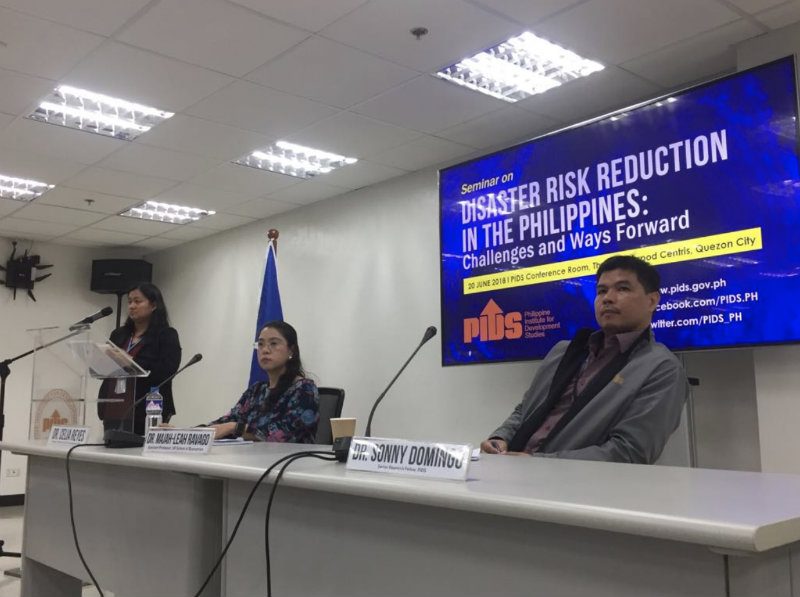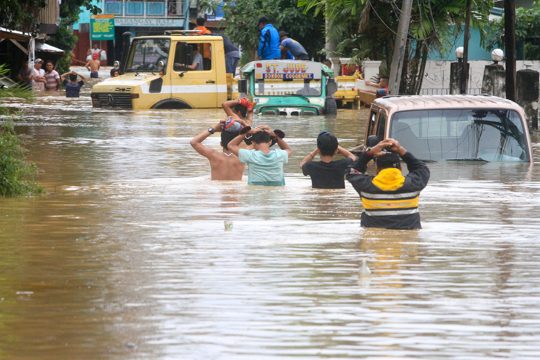SUMMARY
This is AI generated summarization, which may have errors. For context, always refer to the full article.

MANILA, Philippines – With the rainy season underway, the government and organizations are bracing for the coming storms. This raises the question: How do local government units (LGUs) improve public welfare during disasters?
A study presented at a recent seminar on disaster risk reduction in the Philippines showed that in some cases, public welfare during disasters is compromised due to politics.
Among the findings of the study, titled “Coping with disasters due to natural hazards: Evidence from the Philippines,” presented by Dr Maja-Leah V. Ravago and her team, is that a one percentage point increase in the dynasty share of a province decreases the probability of recovery from disaster by 74%. (READ: The role of LGUs, local councils during disasters)
Ravago explained that officials who have shorter terms in office will most likely invest in risk management measures that will last only during their term. This is because if long term measures are in place, it will not be attributed to them but to whoever is in office.
“More often you see mayors invest in [short-term] disaster management because the benefits accrue why they are still in office,” she said.
“You can really see the politics play in distributing relief,” Ravago added. “It’s a disaster. It plays a role in the recovery of LGUs. Local revenue and political dynasty matter.” (READ: LGU contingency plans should be tested, regularly updated – DILG)
On the flipside, a one percentage point increase in the total revenues of an LGU was found to increase recovery by 7 percentage points. (READ: Bring disaster preparedness down to communities – DILG exec)
Science in disaster management
According to a World Risk report, the Philippines ranks third among countries with the highest risk and exposure to hazard worldwide. Studies show that there have been approximately 130 million Filipinos affected by weather-related disasters.
Seeking to find ways to strengthen the capacity of LGUs to prepare for and respond to disasters, Ravago, along with Dennis S. Mapa, Jun Sunglao, and James Roumasset, embarked on a study of the state of disaster management in the Philippines.
The scope of their research focused on disasters caused by hydro-meteorological hazards – strong winds and rains, floods, landslides and big waves. Volcanic eruptions were excluded as they have a lower probability.
A total of 47 provinces and 198 municipalities were sampled in the study that began in 2016.

An important factor of the study is “shock,” which Ravago defined as “an unforeseen adverse event or disaster due to natural hazards that can lead to a decrease in welfare.”
The survey asked the respondents from the green offices of the LGUs to define the shock they experienced. At least 189 out of the 193 municipalities said “yes” to experiencing shock. Of these, 61% experienced ‘very severe’ to ‘most severe’ shock in occurrences of floods, rains, and strong winds.
Since the survey is perception-based, the researchers validated it with external data. A positive linear relationship was found, which meant that the perceptions of the LGUs coincided with the external measures, validating that the shock was indeed severe.
Road to recovery
Based on the study, Quezon City had the highest number of families – 200,000 – were affected by “most severe” shock.
Among those affected, 67% have fully recovered. In terms of the state of recovery, 76% said that they were in better shape than before.
Ravago expounded on the different types of recovery a municipality experiences after experiecing shock from a natural hazard.
“The first is ‘no recovery’, where there are cases the municipality does not recover at all, like the experience of Haiti,” she said. “Then there’s ‘recovery to trend’ is when you go back to where you are before.”
Another type is “creative destruction,” where after the disaster, the affected area is not just able to bounce back, but further improve.
Ravago cited the case of Bohol, which was struck by a strong earthquake in 2013. “In Bohol, their public market was destroyed by a recent earthquake, and they’re now creating a more sophisticated, modern market,” she sid.
Ravago said their team is eyeing a study on geological hazards, such as volcanic eruptions, landslides, and earthquakes. – Rappler.com
Luisa Jocson is an intern at Rappler. She is currently majoring in AB Communication at the Ateneo de Manila University.
Add a comment
How does this make you feel?
There are no comments yet. Add your comment to start the conversation.